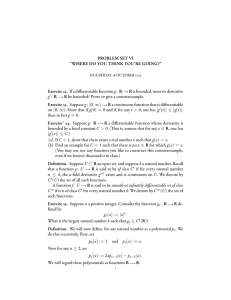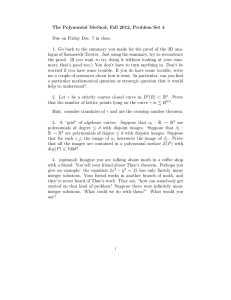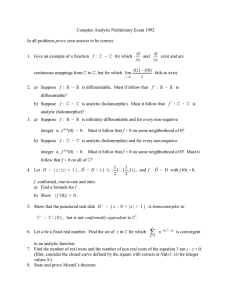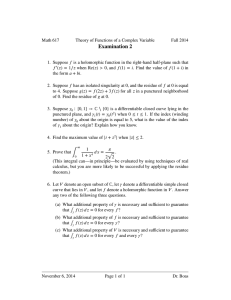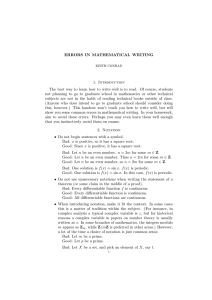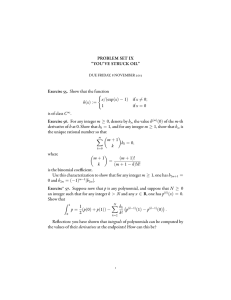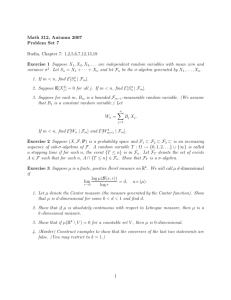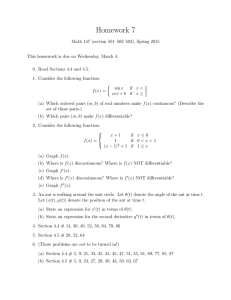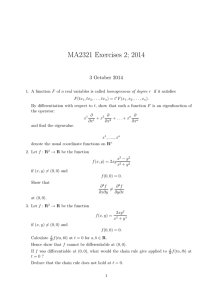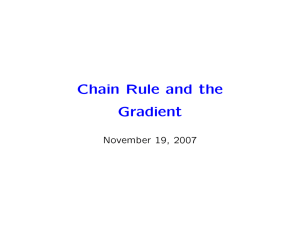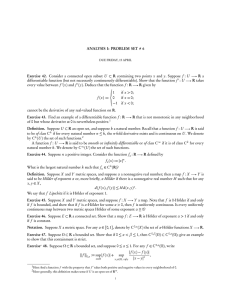PROBLEM SET VI “DISTINGUISHING” (x) = x
advertisement
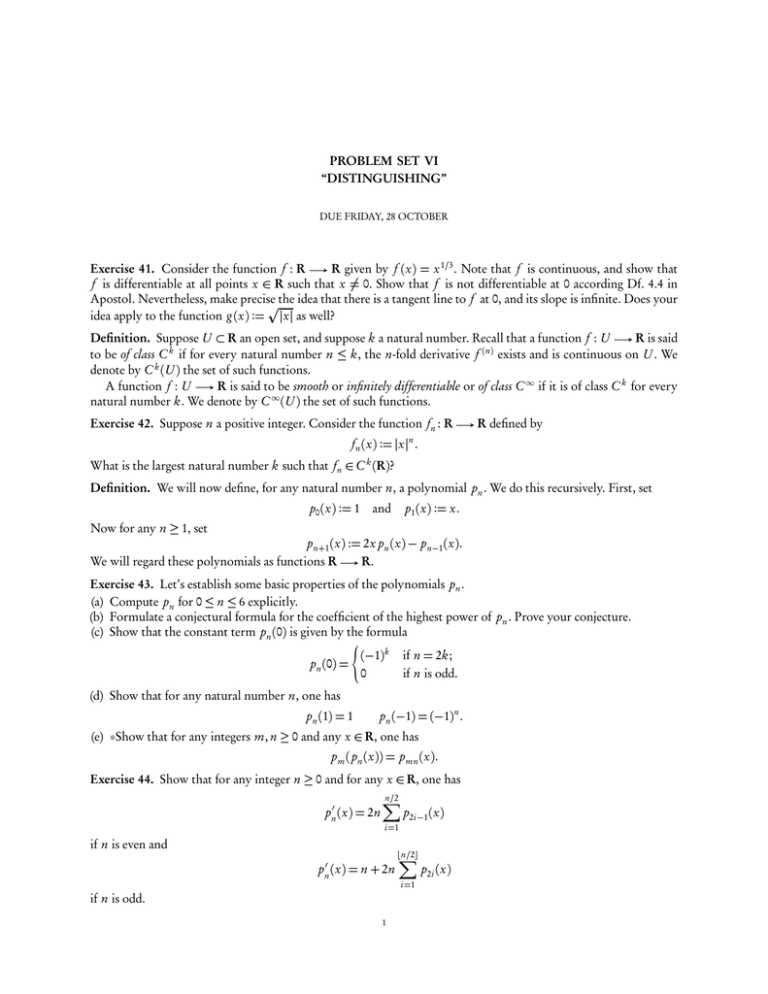
PROBLEM SET VI “DISTINGUISHING” DUE FRIDAY, 28 OCTOBER Exercise 41. Consider the function f : R R given by f (x) = x 1/3 . Note that f is continuous, and show that f is differentiable at all points x ∈ R such that x 6= 0. Show that f is not differentiable at 0 according Df. 4.4 in Apostol. Nevertheless, make precise pthe idea that there is a tangent line to f at 0, and its slope is infinite. Does your idea apply to the function g (x) := |x| as well? R is said Definition. Suppose U ⊂ R an open set, and suppose k a natural number. Recall that a function f : U to be of class C k if for every natural number n ≤ k, the n-fold derivative f (n) exists and is continuous on U . We denote by C k (U ) the set of such functions. A function f : U R is said to be smooth or infinitely differentiable or of class C ∞ if it is of class C k for every natural number k. We denote by C ∞ (U ) the set of such functions. Exercise 42. Suppose n a positive integer. Consider the function fn : R R defined by n fn (x) := |x| . What is the largest natural number k such that fn ∈ C k (R)? Definition. We will now define, for any natural number n, a polynomial pn . We do this recursively. First, set p0 (x) := 1 p1 (x) := x. and Now for any n ≥ 1, set pn+1 (x) := 2x pn (x) − pn−1 (x). R. We will regard these polynomials as functions R Exercise 43. Let’s establish some basic properties of the polynomials pn . (a) Compute pn for 0 ≤ n ≤ 6 explicitly. (b) Formulate a conjectural formula for the coefficient of the highest power of pn . Prove your conjecture. (c) Show that the constant term pn (0) is given by the formula ( (−1)k if n = 2k; pn (0) = 0 if n is odd. (d) Show that for any natural number n, one has pn (1) = 1 pn (−1) = (−1)n . (e) ∗Show that for any integers m, n ≥ 0 and any x ∈ R, one has p m ( pn (x)) = p mn (x). Exercise 44. Show that for any integer n ≥ 0 and for any x ∈ R, one has pn0 (x) = 2n n/2 X if n is even and pn0 (x) = p2i−1 (x) i =1 n + 2n bn/2c X i =1 if n is odd. 1 p2i (x) 2 DUE FRIDAY, 28 OCTOBER Definition. Let us say that a function φ: R R is of C-type if for any integer n ≥ 0 and any x ∈ R, one has φ(n x) = pn (φ(x)). Exercise 45. Suppose φ, ψ: R R are functions such that for any x, y ∈ R, one has φ(x + y) = φ(x)φ(y) − ψ(x)ψ(y), ψ(x + y) = φ(x)ψ(y) + ψ(x)φ(y), and φ(x)2 + ψ(x)2 = 1. Show that φ is of C-type. Exercise 46. Suppose φ: R R a function of C-type. Show that for any integer n ≥ 1 and any x ∈ R, one has φ0 ((n + 1)x) − φ0 ((n − 1)x) = 2φ(n x)φ0 (x).
